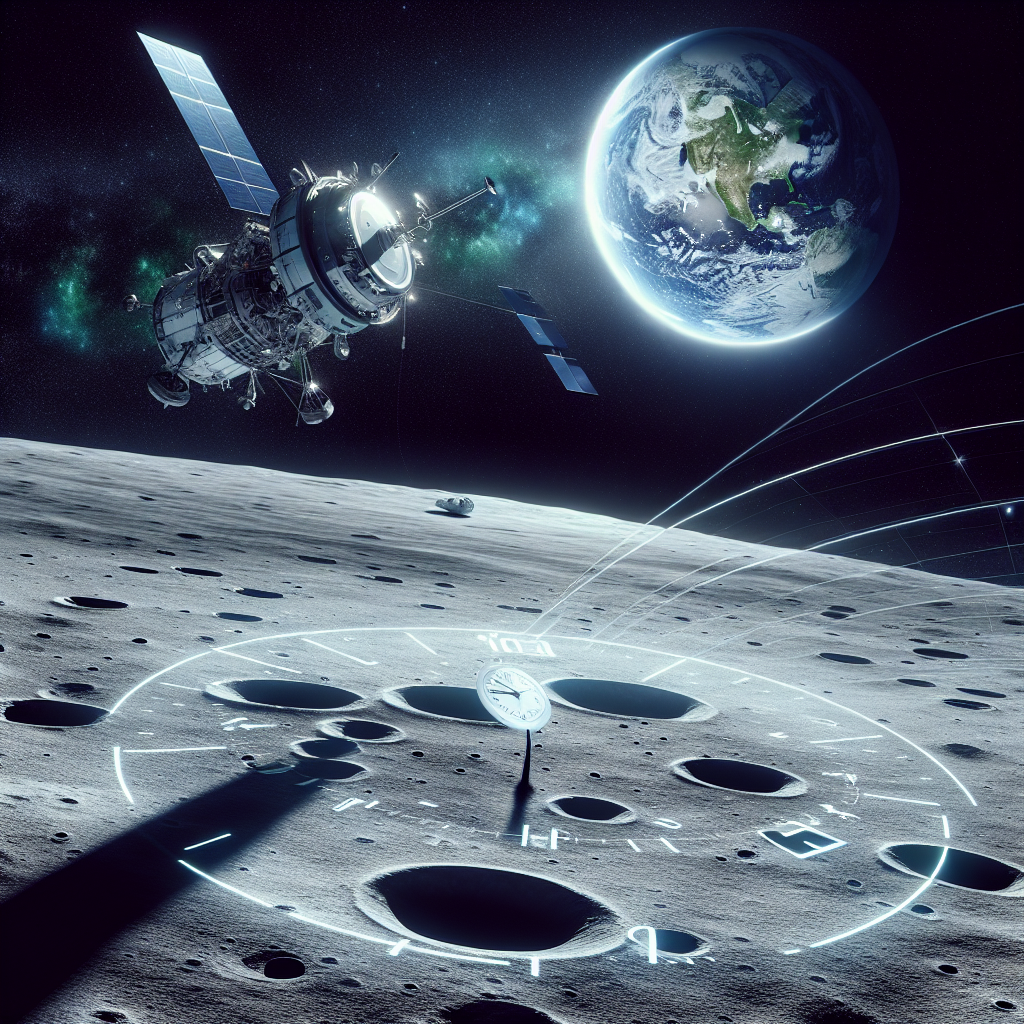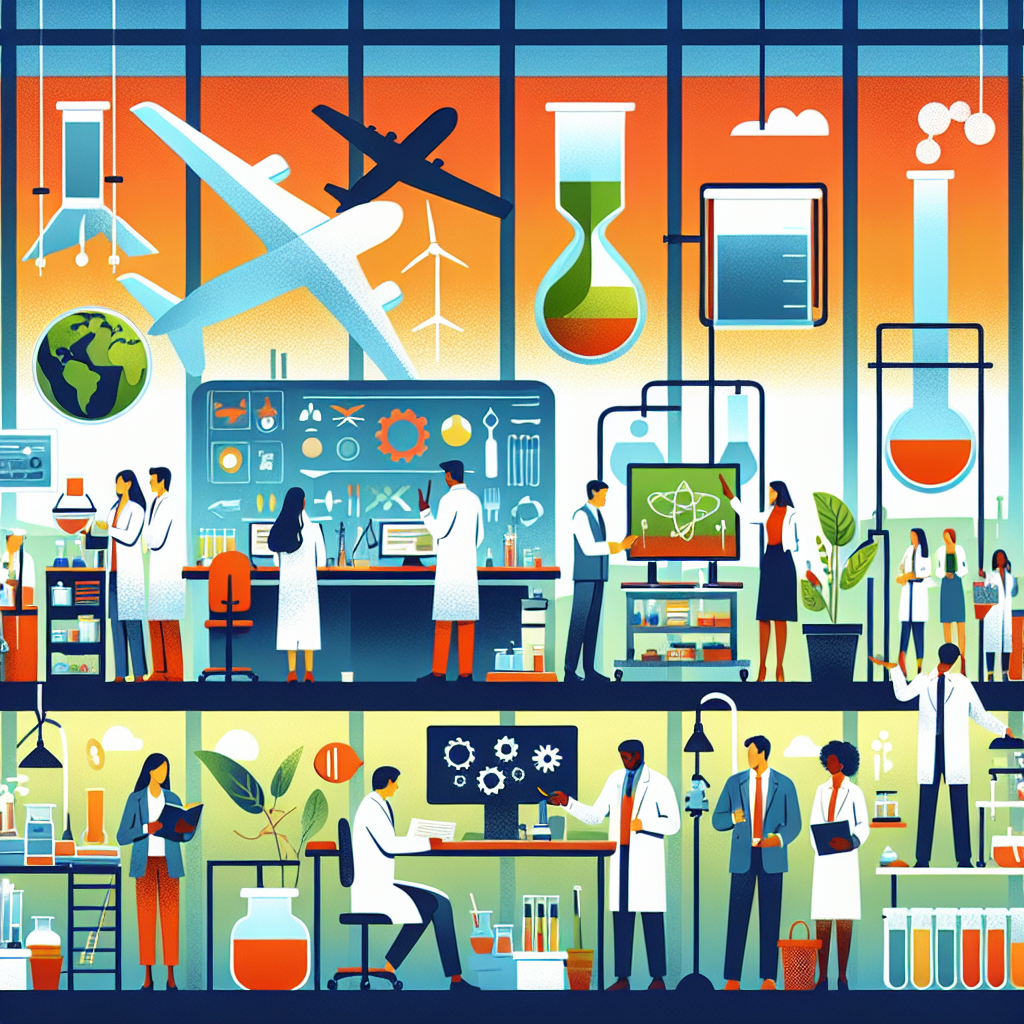The White House is urging NASA to develop a new time zone for the Moon called Coordinated Lunar Time (LTC). Due to the Moon’s different gravitational field strength, time moves faster there compared to Earth, with a difference of 58.7 microseconds per day. While this may seem insignificant, it can have a significant impact on synchronizing spacecraft. The US government hopes that implementing a new time zone will help coordinate national and private efforts to reach the Moon.
According to Professor Catherine Heymans, Scotland’s Astronomer Royal, the theory of gravity in our Universe states that time runs differently in different places. The gravity on the Moon is slightly weaker, causing clocks to run differently. Currently, time is measured on Earth using atomic clocks that measure the changing energy state of atoms to record time to the nanosecond. If these clocks were placed on the Moon, they would run one second faster over a span of 50 years.
NASA is not the only organization working on creating a lunar time system. The European Space Agency is also developing its own time system. However, for a new time zone to be established, there needs to be agreement between countries and a centralized coordinating body. Currently, the International Bureau of Weights and Measures is responsible for coordinating time on Earth. The starting point and extent of the new time frame will also need to be determined through international consensus.
The US aims to have LTC ready by 2026 for its manned mission to the Moon, known as Artemis-3. This mission will be the first to return to the Moon’s surface since Apollo 17 in 1972. Precision is crucial in locating and directing this mission, as errors in navigation could result in spacecraft entering the wrong orbits. Additionally, if time is not coordinated between different missions, it could pose challenges in sending data and communication between spacecraft, satellites, and Earth.
In conclusion, the White House is pushing for the development of a new time zone for the Moon to ensure better coordination and synchronization of spacecraft missions. The different gravitational field on the Moon causes time to move faster there compared to Earth. Establishing a new time zone requires international agreement and a centralized coordinating body. The US aims to have this new time zone ready by 2026 for its manned mission to the Moon.
Original news source: White House wants Moon to have its own time zone (BBC)
🎧 Listen:
Slow
Normal
Fast
📖 Vocabulary:
| 1 | urging | Strongly recommending or encouraging a course of action |
| 2 | gravitational | Relating to the force that attracts a body toward the center of the earth, or toward any other physical body having mass |
| 3 | microseconds | Units of time equal to one millionth of a second |
| 4 | synchronize | To cause to operate in unison |
| 5 | significant | Having considerable importance, size, or worth |
| 6 | atomic | Relating to atoms, the basic units of matter |
| 7 | consensus | General agreement among various groups |
| 8 | centralized | Concentrated in a single location or authority for control |
| 9 | precision | The quality of being exact and accurate |
| 10 | navigating | The process of planning and directing the route or course of a vehicle, especially a ship or aircraft |
| 11 | challenges | Difficult tasks or problems that need to be dealt with |
| 12 | coordination | The organization of different elements to enable them to operate together effectively |
| 13 | satellites | Objects launched into orbit around the earth or another celestial body |
| 14 | Artemis-3 | The name of a specific space mission |
| 15 | lunar | Relating to the moon |
Group or Classroom Activities
Warm-up Activities:
– News Summary
Instructions: In pairs or small groups, students will read the article and then work together to create a concise summary of the main points. They should focus on capturing the key information and presenting it in a clear and organized manner. Afterward, groups can take turns sharing their summaries with the class.
– Opinion Poll
Instructions: Students will form pairs or small groups. Each group will discuss and debate their opinions on the idea of creating a new time zone for the Moon. They should consider the advantages, disadvantages, and potential challenges of implementing such a system. Afterward, each group will present their opinions to the class and lead a class-wide discussion.
– Vocabulary Pictionary
Instructions: Divide the class into two teams. Give each team a set of vocabulary words from the article. One team member from each team will come to the front of the class and draw a picture to represent a word without speaking or writing any letters or numbers. The team members must guess the word based on the drawing. The team that guesses correctly earns a point. Continue until all the words have been drawn and guessed.
– Pros and Cons
Instructions: In pairs or small groups, students will create a list of the pros and cons of establishing a new time zone for the Moon. They should consider the potential benefits and drawbacks from various perspectives, such as scientific, logistical, and international cooperation. Afterward, each group will share their lists and engage in a class discussion to compare and analyze the different viewpoints.
– Future Predictions
Instructions: In pairs or small groups, students will discuss and make predictions about the future of space exploration and the potential impact of a new time zone for the Moon. They should consider the advancements in technology, international cooperation, and potential challenges that may arise. Afterward, each group will present their predictions to the class and engage in a class-wide discussion.
🤔 Comprehension Questions:
1. Why is the White House urging NASA to develop a new time zone for the Moon?
2. How does the Moon’s different gravitational field affect the passage of time?
3. How do atomic clocks measure time on Earth?
4. What is the role of the International Bureau of Weights and Measures in coordinating time on Earth?
5. Why is precision crucial in locating and directing the Artemis-3 mission?
6. What challenges could arise if time is not coordinated between different missions to the Moon?
7. What is the goal of establishing a new time zone for the Moon?
8. When does the US aim to have the new lunar time zone ready for its manned mission to the Moon?
Go to answers ⇩
🎧✍️ Listen and Fill in the Gaps:
The White (1)______ is urging NASA to develop a new time zone for the Moon called (2)______ Lunar Time (LTC). Due to the Moon’s different gravitational field strength, time moves faster there compared to Earth, with a difference of 58.7 microseconds per day. While this may seem insignificant, it can have a significant impact on synchronizing (3)______. The US government hopes that implementing a new time zone will help coordinate national and private (4)______ to reach the Moon.
According to Professor Catherine Heymans, Scotland’s Astronomer Royal, the theory of gravity in our Universe states that time runs differently in different places. The gravity on the Moon is slightly weaker, causing clocks to run differently. Currently, time is (5)______d on Earth using atomic clocks that measure the (6)______ energy state of (7)______ to record time to the nanosecond. If these clocks were placed on the Moon, they would run one second faster over a span of 50 years.
NASA is not the only organization working on creating a lunar time system. The European Space Agency is also developing its own time system. However, for a new time zone to be established, there needs to be agreement between (8)______ and a centralized coordinating body. Currently, the International Bureau of Weights and Measures is responsible for coordinating time on Earth. The (9)______ point and extent of the new time (10)______ will also need to be determined through international consensus.
The US aims to have LTC ready by 2026 for its manned (11)______ to the Moon, known as Artemis-3. This mission will be the first to return to the Moon’s surface since Apollo 17 in 1972. Precision is crucial in (12)______ and directing this mission, as errors in navigation could result in spacecraft entering the wrong orbits. Additionally, if time is not coordinated between different missions, it could pose challenges in sending data and communication between spacecraft, satellites, and Earth.
In conclusion, the White House is pushing for the development of a new time zone for the Moon to ensure better coordination and synchronization of spacecraft missions. The different gravitational field on the Moon (13)______ time to move faster there (14)______ to Earth. Establishing a new time zone requires (15)______ agreement and a (16)______ coordinating body. The US aims to have this new time zone ready by 2026 for its manned mission to the Moon.
Go to answers ⇩
💬 Discussion Questions:
Students can ask a partner these questions, or discuss them as a group.
1. What is the significance of having a coordinated time zone for spacecraft missions to the Moon?
2. How would you feel if you were part of a manned mission to the Moon and had to adjust to a new time zone?
3. Do you think it is necessary to have a centralized coordinating body for establishing a new time zone for the Moon? Why or why not?
4. What challenges do you think could arise if time is not coordinated between different spacecraft missions?
5. How do you think the development of a lunar time system will impact future space exploration?
6. Do you believe that time runs differently in different places? Why or why not?
7. What are the potential benefits of having a new time zone for the Moon?
8. How do you think the development of a lunar time system will affect communication between spacecraft, satellites, and Earth?
9. Would you like to be part of a manned mission to the Moon? Why or why not?
10. What do you think are the main factors that need to be considered when determining the starting point and extent of the new time frame for the Moon?
11. How do you think the implementation of a new time zone for the Moon will impact international cooperation in space exploration?
12. What challenges do you think could arise in reaching international agreement on the establishment of a new time zone for the Moon?
13. Do you think the development of a lunar time system will have any implications for timekeeping on Earth? Why or why not?
14. How do you think the development of a new time zone for the Moon will affect future scientific research and discoveries?
15. What other factors, besides time, do you think need to be considered in coordinating spacecraft missions to the Moon? Why?
Individual Activities
📖💭 Vocabulary Meanings:
Match each word to its meaning.
Words:
1. urging
2. gravitational
3. microseconds
4. synchronize
5. significant
6. atomic
7. consensus
8. centralized
9. precision
10. navigating
11. challenges
12. coordination
13. satellites
14. Artemis-3
15. lunar
Meanings:
(A) Concentrated in a single location or authority for control
(B) General agreement among various groups
(C) Relating to the moon
(D) To cause to operate in unison
(E) The quality of being exact and accurate
(F) The organization of different elements to enable them to operate together effectively
(G) Relating to atoms, the basic units of matter
(H) Objects launched into orbit around the earth or another celestial body
(I) The name of a specific space mission
(J) Units of time equal to one millionth of a second
(K) Difficult tasks or problems that need to be dealt with
(L) Having considerable importance, size, or worth
(M) Relating to the force that attracts a body toward the center of the earth, or toward any other physical body having mass
(N) The process of planning and directing the route or course of a vehicle, especially a ship or aircraft
(O) Strongly recommending or encouraging a course of action
Go to answers ⇩
🔡 Multiple Choice Questions:
1. Why is the White House urging NASA to develop a new time zone for the Moon?
(a) To synchronize spacecraft
(b) To coordinate national and private efforts to reach the Moon
(c) To measure time to the nanosecond
(d) To establish a centralized coordinating body
2. How much faster does time move on the Moon compared to Earth?
(a) 1 second per year
(b) 50 nanoseconds per hour
(c) 17.2 milliseconds per week
(d) 58.7 microseconds per day
3. Who is responsible for coordinating time on Earth?
(a) NASA
(b) European Space Agency
(c) International Bureau of Weights and Measures
(d) Scotland’s Astronomer Royal
4. What is the name of the US manned mission to the Moon?
(a) Apollo 17
(b) LTC
(c) Coordinated Lunar Time
(d) Artemis-3
5. When was the last time a mission landed on the Moon’s surface before Artemis-3?
(a) 2026
(b) 1969
(c) 1972
(d) 1985
6. Why is precision crucial in locating and directing the Artemis-3 mission?
(a) Errors in navigation could result in spacecraft entering the wrong orbits
(b) Time needs to be coordinated between different missions
(c) The Moon’s gravitational field is stronger than Earth’s
(d) Data and communication between spacecraft and Earth could be compromised
7. What is the starting point and extent of the new time frame for the Moon?
(a) The White House
(b) To be determined through international consensus
(c) The European Space Agency
(d) Scotland’s Astronomer Royal
8. What is the purpose of using atomic clocks to measure time on Earth?
(a) To record time to the nanosecond
(b) To synchronize spacecraft
(c) To coordinate national and private efforts to reach the Moon
(d) To establish a centralized coordinating body
Go to answers ⇩
🕵️ True or False Questions:
1. The International Bureau of Weights and Measures is not responsible for coordinating time on Earth.
2. The US aims to have the new time zone ready by 2026 for its manned mission to the Moon.
3. NASA is not the only organization working on creating a lunar time system, the European Space Agency is not developing its own time system.
4. The White House is not urging NASA to develop a new time zone for the Moon called Coordinated Lunar Time (LTC).
5. The gravity on the Moon is slightly weaker, causing clocks to run differently.
6. Time is currently measured on Earth using atomic clocks that measure the changing energy state of atoms to record time to the nanosecond.
7. Time moves slower on the Moon compared to Earth, with a difference of 58.7 microseconds per day.
8. The US government hopes that implementing a new time zone will help coordinate national and private efforts to reach the Moon.
Go to answers ⇩
📝 Write a Summary:
Write a summary of this news article in two sentences.
Check your writing now with the best free AI for English writing!
Writing Questions:
Answer the following questions. Write as much as you can for each answer.
Check your answers with our free English writing assistant!
1. Why is the White House urging NASA to develop a new time zone for the Moon?
2. How does the different gravitational field on the Moon affect the measurement of time?
3. What other organization is also working on creating a lunar time system?
4. What is the role of the International Bureau of Weights and Measures in coordinating time on Earth?
5. Why is precision in time coordination crucial for the upcoming Artemis-3 mission to the Moon?
✅ Answers
🤔✅ Comprehension Question Answers:
1. The White House is urging NASA to develop a new time zone for the Moon to better coordinate and synchronize spacecraft missions.
2. The Moon’s different gravitational field causes time to move faster there compared to Earth, with a difference of 58.7 microseconds per day.
3. Atomic clocks measure time on Earth by measuring the changing energy state of atoms to record time to the nanosecond.
4. The International Bureau of Weights and Measures is responsible for coordinating time on Earth.
5. Precision is crucial in locating and directing the Artemis-3 mission because errors in navigation could result in spacecraft entering the wrong orbits.
6. If time is not coordinated between different missions to the Moon, challenges could arise in sending data and communication between spacecraft, satellites, and Earth.
7. The goal of establishing a new time zone for the Moon is to ensure better coordination and synchronization of spacecraft missions.
8. The US aims to have the new lunar time zone ready by 2026 for its manned mission to the Moon.
Go back to questions ⇧
🎧✍️✅ Listen and Fill in the Gaps Answers:
(1) House
(2) Coordinated
(3) spacecraft
(4) efforts
(5) measure
(6) changing
(7) atoms
(8) countries
(9) starting
(10) frame
(11) mission
(12) locating
(13) causes
(14) compared
(15) international
(16) centralized
Go back to questions ⇧
📖💭✅ Vocabulary Meanings Answers:
1. urging
Answer: (O) Strongly recommending or encouraging a course of action
2. gravitational
Answer: (M) Relating to the force that attracts a body toward the center of the earth, or toward any other physical body having mass
3. microseconds
Answer: (J) Units of time equal to one millionth of a second
4. synchronize
Answer: (D) To cause to operate in unison
5. significant
Answer: (L) Having considerable importance, size, or worth
6. atomic
Answer: (G) Relating to atoms, the basic units of matter
7. consensus
Answer: (B) General agreement among various groups
8. centralized
Answer: (A) Concentrated in a single location or authority for control
9. precision
Answer: (E) The quality of being exact and accurate
10. navigating
Answer: (N) The process of planning and directing the route or course of a vehicle, especially a ship or aircraft
11. challenges
Answer: (K) Difficult tasks or problems that need to be dealt with
12. coordination
Answer: (F) The organization of different elements to enable them to operate together effectively
13. satellites
Answer: (H) Objects launched into orbit around the earth or another celestial body
14. Artemis-3
Answer: (I) The name of a specific space mission
15. lunar
Answer: (C) Relating to the moon
Go back to questions ⇧
🔡✅ Multiple Choice Answers:
1. Why is the White House urging NASA to develop a new time zone for the Moon?
Answer: (b) To coordinate national and private efforts to reach the Moon
2. How much faster does time move on the Moon compared to Earth?
Answer: (d) 58.7 microseconds per day
3. Who is responsible for coordinating time on Earth?
Answer: (c) International Bureau of Weights and Measures
4. What is the name of the US manned mission to the Moon?
Answer: (d) Artemis-3
5. When was the last time a mission landed on the Moon’s surface before Artemis-3?
Answer: (c) 1972
6. Why is precision crucial in locating and directing the Artemis-3 mission?
Answer: (a) Errors in navigation could result in spacecraft entering the wrong orbits
7. What is the starting point and extent of the new time frame for the Moon?
Answer: (b) To be determined through international consensus
8. What is the purpose of using atomic clocks to measure time on Earth?
Answer: (a) To record time to the nanosecond
Go back to questions ⇧
🕵️✅ True or False Answers:
1. The International Bureau of Weights and Measures is not responsible for coordinating time on Earth. (Answer: False)
2. The US aims to have the new time zone ready by 2026 for its manned mission to the Moon. (Answer: True)
3. NASA is not the only organization working on creating a lunar time system, the European Space Agency is not developing its own time system. (Answer: False)
4. The White House is not urging NASA to develop a new time zone for the Moon called Coordinated Lunar Time (LTC). (Answer: False)
5. The gravity on the Moon is slightly weaker, causing clocks to run differently. (Answer: True)
6. Time is currently measured on Earth using atomic clocks that measure the changing energy state of atoms to record time to the nanosecond. (Answer: True)
7. Time moves slower on the Moon compared to Earth, with a difference of 58.7 microseconds per day. (Answer: False)
8. The US government hopes that implementing a new time zone will help coordinate national and private efforts to reach the Moon. (Answer: True)
Go back to questions ⇧













